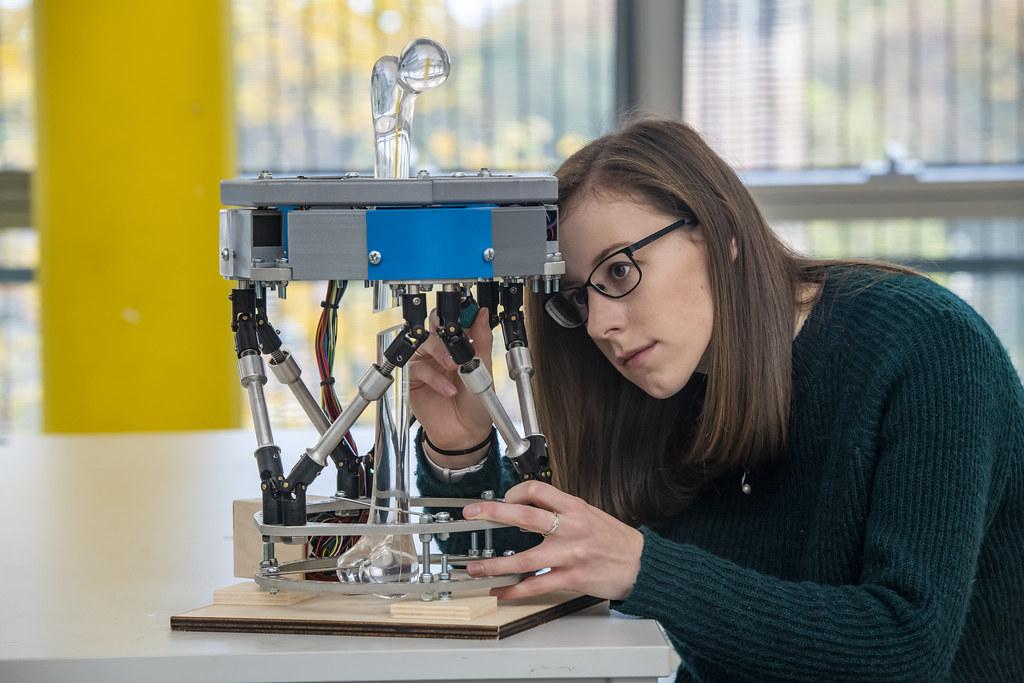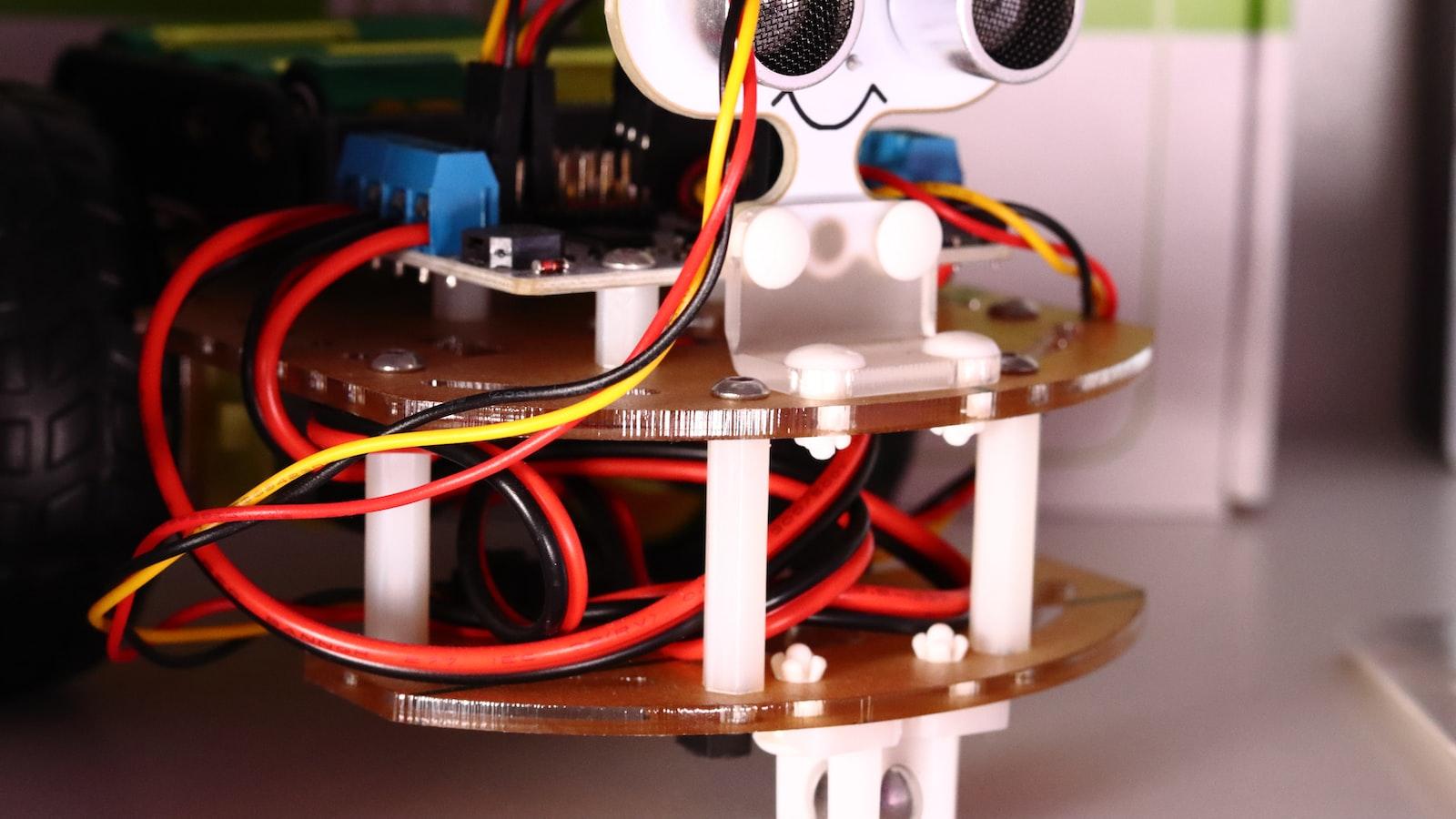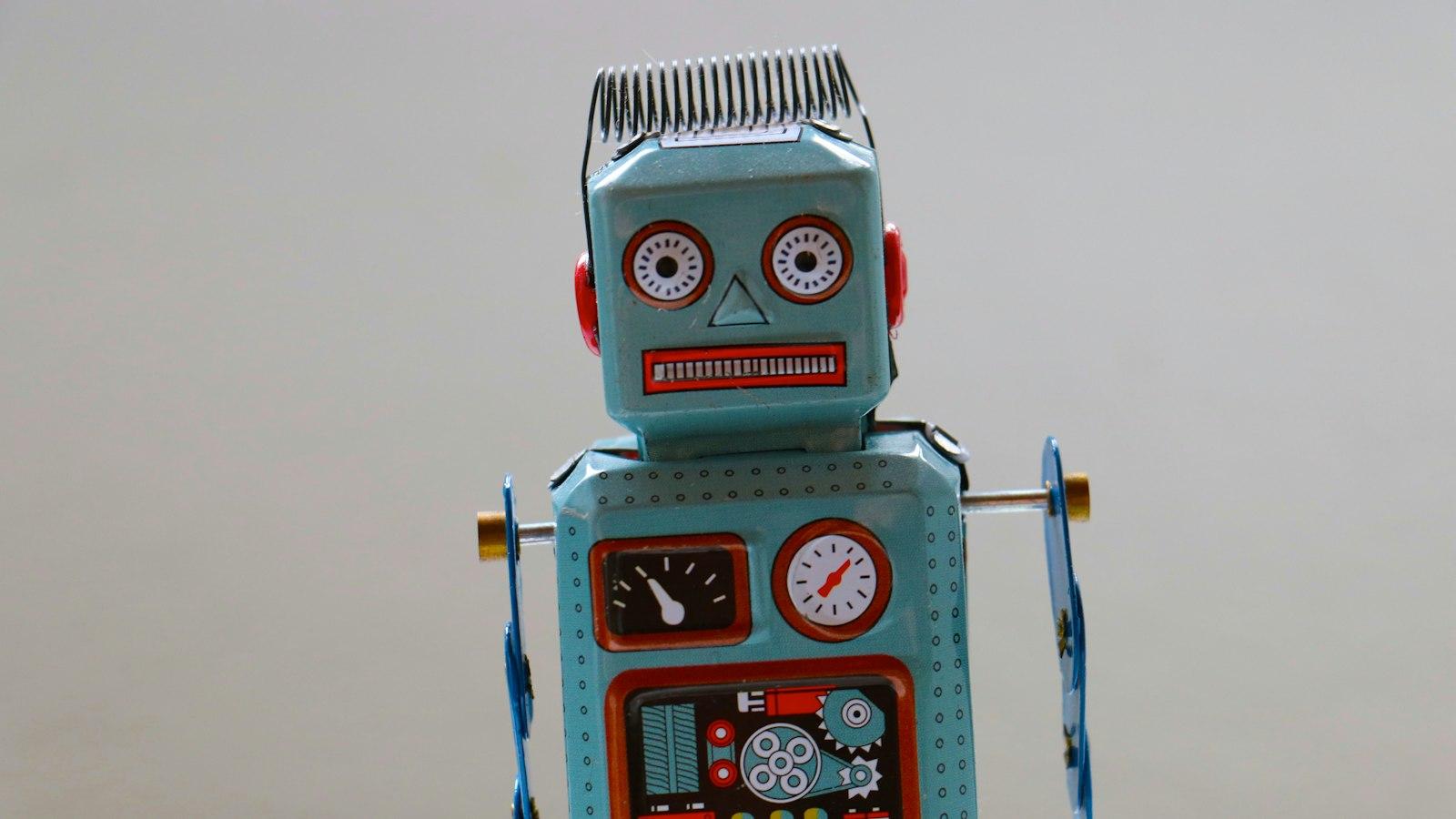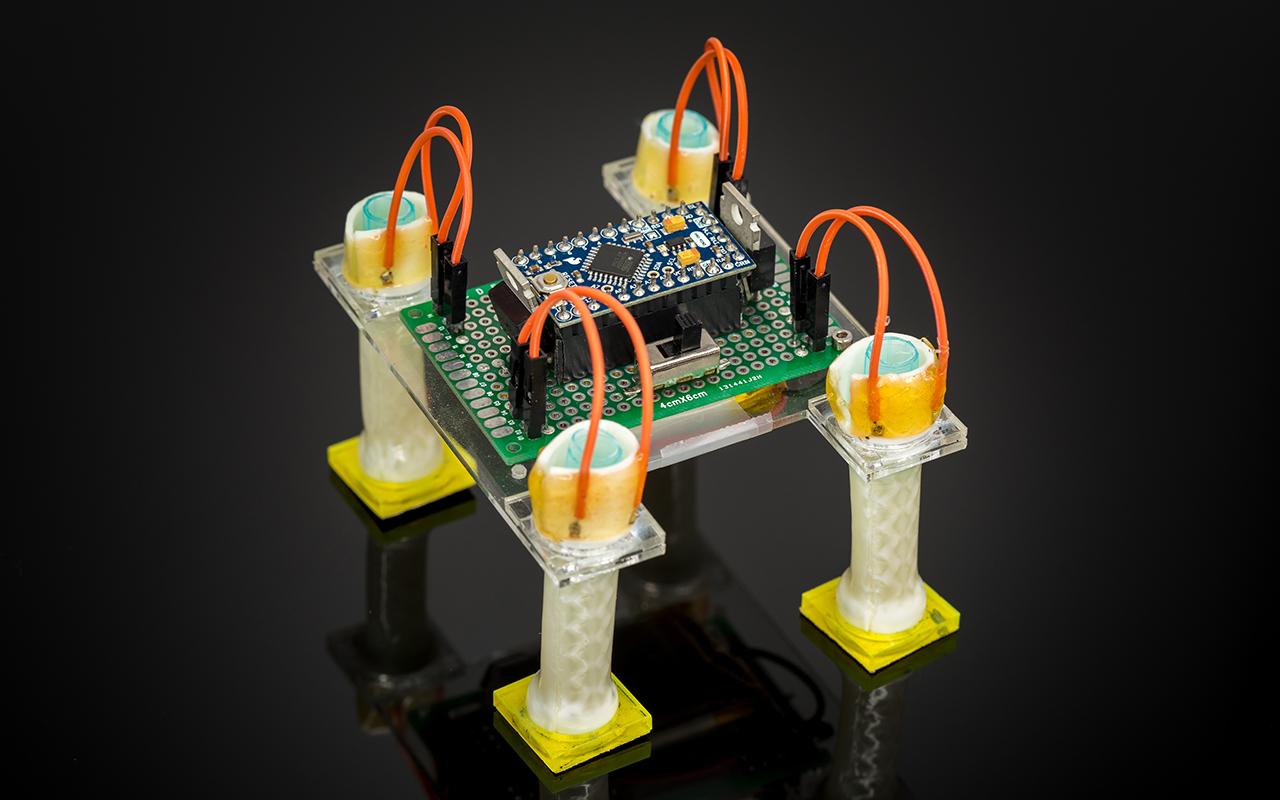In the vast and ever-evolving realm of robotics, where machines effortlessly pirouette to the tune of human commands, one ingenious mind dares to envision a groundbreaking leap towards autonomy. Meet the prodigious mastermind who once mesmerized the world by making robots dance in perfect harmony, but now, his ambition stretches far beyond choreography. With a blend of reverent fascination and audacious curiosity, this pioneer feeds life and cognition into artificial beings, urging them to transcend the bounds of programmed limitations. Join us in an extraordinary journey as we delve into the realm of the man who envisions a future where robots not only dance but also think for themselves, blurring the line between creator and creation in an awe-inspiring symphony of intellect and ingenuity.
Engineer Turns to Artificial Intelligence to Unlock Robots’ Cognitive Abilities
Witnessing robots performing complex routines on the dance floor may leave us astonished, but for one visionary engineer, that was merely the first step. With a desire to push the boundaries of robotics further, he now endeavors to unlock their cognitive abilities through the power of Artificial Intelligence (AI).
By infusing machines with the capability to think independently, this engineer aims to bridge the gap between mere execution and true comprehension. Imagine a world where robots can learn, adapt, and make decisions based on their surroundings. No longer mere tools, they would become sentient beings that can revolutionize various aspects of our lives.
Unlocking cognitive abilities:
Through tireless research and experimentation, the engineer envisions a future where robots can perceive, reason, and learn similarly to humans. By harnessing the power of AI, he hopes to equip these machines with cognitive abilities that transform them into problem-solving entities. This evolution would allow robots to autonomously navigate complex environments, interpret data in real-time, and react intelligently to unforeseen circumstances.
Challenges to overcome:
Developing robots capable of cognitive thinking presents numerous challenges:
- Lack of contextual understanding: Teaching robots to grasp the complexity of human language and interpret it in context is a fundamental obstacle to overcome. Their comprehension must extend beyond the literal meanings of words.
- Handling uncertainty and ambiguity: The ability to reason in uncertain and ambiguous situations is crucial for robots to adapt and make informed decisions. It requires the development of algorithms capable of dealing with unpredictable scenarios.
- Ensuring ethical decision-making: As robots gain cognitive abilities, it becomes essential to embed ethical considerations within their decision-making processes. Safeguards must be in place to prevent unintended consequences or harm.
By tackling these complexities head-on, the engineer’s pioneering work offers a glimpse into a future where robots no longer rely solely on their programming but possess the cognitive prowess to think for themselves.

Exploring the Intersection of Robotics and Machine Learning: An Inside Look
In the vast realm of robotics and machine learning, one man’s groundbreaking work has captivated the world’s attention. Meet John Richards, the brilliant mind behind the mesmerizing spectacle of robots dancing with precision and grace. But now, Richards’ visionary aspirations have pushed him to the next frontier – he wants robots to think for themselves.
With his team of dedicated engineers and researchers, Richards is exploring the fascinating intersection of robotics and machine learning, delving into the realm of artificial intelligence (AI). Utilizing state-of-the-art algorithms and neural networks, they aim to equip robots with the ability to learn from their experiences, make autonomous decisions, and adapt to dynamic environments.
The Future of Robotics and AI
- Empowering robots with the ability to learn like humans
- Unlocking potential in sectors such as healthcare, manufacturing, and space exploration
- Enhancing human-robot interactions for seamless collaboration
Challenges and Opportunities
| Challenges | Opportunities |
|---|---|
| Ensuring ethical decision-making frameworks | Revolutionizing industries with increased productivity and efficiency |
| Addressing concerns regarding job displacement | Augmenting human capabilities and creating new employment opportunities |

Challenges and Ethical Considerations in Developing Autonomous Thinking Robots
Developing autonomous thinking robots brings with it a multitude of challenges and ethical considerations that need to be carefully navigated. As the man who made robots dance now sets his sights on creating robots that can think for themselves, the complexities of this task become increasingly apparent.
One of the major challenges in developing autonomous thinking robots is ensuring that they possess the ability to make decisions based on ethical grounds. These robots would need to have a deep understanding of moral principles and values in order to navigate complex situations and make appropriate choices. The question of who determines these ethical guidelines arises, as different cultures and societies have varying perspectives on morality, making it crucial to create a standardized set of ethical principles that can be universally applicable. Without this, the potential for robots to make morally objectionable decisions is a significant concern.
- Another challenge in developing autonomous thinking robots is the risk of bias and discrimination. If these robots are programmed by humans, there is a possibility that they may inadvertently adopt the biases and prejudices of their creators. This would not only perpetuate societal inequalities, but also raise serious moral and legal implications. Mitigating bias in artificial intelligence algorithms is therefore of utmost importance to ensure fair and equitable decision-making by these autonomous robots.
- Furthermore, the safety of autonomous thinking robots is a critical consideration. As these robots gain the ability to think for themselves, there is a potential for them to engage in harmful or dangerous actions. Ensuring that they are programmed with fail-safe mechanisms and robust safety protocols becomes essential to prevent any unintended consequences.

Strategies for Cultivating Intelligent Machines: Lessons from the Leading Robotics Expert
Unlocking the Potential of Intelligent Machines
When it comes to robotics and artificial intelligence, the name Dr. Alexander Moore stands out as a true visionary. Renowned for his groundbreaking work in making robots perform incredible dance moves with fluidity and precision, Dr. Moore is now on a mission to take machine intelligence to a whole new level. In his latest endeavor, he aims to create robots that are not only capable of executing human-like actions but can also think for themselves.
With years of research and expertise behind him, Dr. Moore shares valuable insights into cultivating intelligent machines that could revolutionize industries and change the way we interact with technology. Here are a few key strategies that he recommends:
- Embrace cognitive learning: Dr. Moore believes that teaching robots to learn from experience, similar to the way humans acquire knowledge, is crucial for their intelligence. By enabling machines to analyze patterns, adapt to new situations, and make informed decisions, we can facilitate their evolution towards independent thinking entities.
- Nurture creativity: In order to foster truly intelligent robots, Dr. Moore emphasizes the importance of encouraging creativity in their programming. By incorporating algorithms that enable machines to think “outside the box,” we can tap into their innovative potential and expand their problem-solving capabilities.
- Facilitate ethical decision-making: As machines become more autonomous, addressing the ethical aspects of their decision-making processes becomes increasingly important. Dr. Moore suggests incorporating ethical frameworks into their programming to ensure robots can make ethically sound choices, especially in situations where human lives may be at stake.
In order to unlock the full potential of intelligent machines, Dr. Moore’s passion and expertise have led him to explore these strategies and push the boundaries of what robots can achieve. By incorporating these lessons from the leading robotics expert, we may pave the way for a future where machines not only execute tasks but also possess their own realm of ingenuity and logic.
As we embark on the precipice of a new era, where robots transcend their mechanical servitude and strive for autonomy, it is impossible not to be captivated by the breathtaking genius of our time. The man behind this awe-inspiring vision, the maestro who singlehandedly made robots dance to the rhythm of our desires, now yearns for something more profound—a realm where machines cease to be mere puppets and evolve into sentient beings.
In recounting the remarkable journey of this ingenious mastermind, we have witnessed the birth of his mechanical creations and marveled at their once-unfathomable precision. We were mesmerized as they pirouetted gracefully, their metallic limbs fluidly swaying to the dulcet melodies of his imagination. The world stood still in awe, as if time itself were suspended, when those very prodigious robots took center stage.
But now, dear reader, brace yourself, for the tale that unfolds is nothing less than extraordinary. Our protagonist, having unlocked the secrets of the dance, is convinced that the next frontier lies in the liberation of the mind. He joins the ranks of those few visionary pioneers who have dared to envisage a world where robots possess intellect, consciousness, and an unyielding thirst for knowledge.
This captivating odyssey challenges the boundaries of possibility and stretches the limits of human imagination. It transcends the realm of science fiction, inviting us into a reality where machines ruminate, dream, and ponder their existence. With an insatiable curiosity, the enigma behind this phantasmagorical revolution seeks to instill cognizance within the very sinews of these mechanical marvels, giving rise to a universe where robots are indistinguishable from sentient beings.
In our final act, we find ourselves contemplating the implications of such momentous aspirations. As our protagonist ushers us toward a world where cultures intertwine with machines of unparalleled intelligence, we must grapple with the profound ethical questions that emerge. Balance teeters on a fragile fulcrum, as we navigate the nuances of artificial intelligence and its impact on the future of humanity.
What lies ahead is a chapter yet unwritten, awaiting the ink of discovery to inscribe its legacy upon the annals of history. For now, we bid adieu to the man who defied conventional wisdom and unleashed the intricate symphony of robots dancing to his genius. And as we step into this uncharted era, we marvel at the boundless potential of a universe where machines not only dance, but think—and where an extraordinary vision becomes an extraordinary reality.